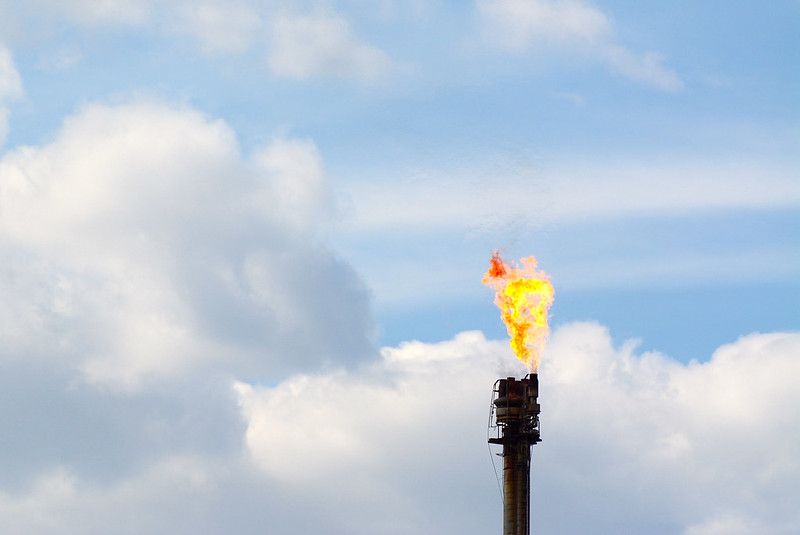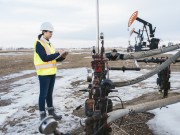As global leaders convened in Dubai for COP28, we got big announcements on methane, including the publication of Canada’s draft oil and gas methane regulations. With policy developing quickly, it is important to take stock of and compare what governments are doing in Canada and around the world to ensure companies use proven measures to reduce methane emissions from upstream oil and gas production.
Methane is a powerful greenhouse gas with roughly 80 times the warming power of carbon dioxide in a 20-year timespan. The oil and gas sector is responsible for roughly 25% of human-caused methane emissions globally — and roughly 40% of Canada’s emissions. Methane reduction from oil and gas is an easy and inexpensive fix, and is often referred to as the “low-hanging fruit” of climate change action.
Bold leadership on methane is critical — from setting ambitious targets to creating effective reduction policies and pathways.
Consensus building on 2030 target in Canada
While provincial and federal governments are at different stages of regulatory development, there is consensus building around a target for 2030. In 2021, Canada set a globally leading target to reduce methane emissions from the oil and gas sector by 75% from 2012 levels by 2030. Prime Minister Trudeau recently announced at the New York Climate Summit that Canada’s methane regulations are expected to result in reductions exceeding the 75% target.
Canada’s largest oil and gas provinces have also set reduction targets. B.C. has committed not only to reduce oil and gas methane emissions by 75% by 2030 but also to achieve near-zero emissions by 2035. It has nearly completed work to improve upon its 2020 oil and gas methane regulations, with new regulations expected in the spring.
In 2015, the Alberta government set a methane reduction target of 40 to 45% by 2025. It claims to have met the target and is assessing potential pathways to a 75 to 80% reduction by 2030. It has yet to begin regulatory development to update and strengthen its 2020 methane regulations.
Finally, Saskatchewan has regulations to reduce methane emissions by over 40% by 2025, which it introduced in 2019 and amended in 2020. The province says methane emissions fell over 60% from 2015 to 2021. It has yet to further update its regulations.
Ambitious target-setting by policymakers highlights the feasibility and importance of acting on methane to achieve meaningful emissions reductions in the short-term for relatively low cost.
Ambition is high, but real reductions remain uncertain
While it’s important to set high ambitions for methane reduction and celebrate successes, a lack of measurement data makes it impossible to know the relevant baselines and difficult to assess outcomes. Studies show that methane emissions are significantly underestimated and underreported.
For instance, methane from Saskatchewan’s Cold Heavy Oil Production with Sand (CHOPS) are four times higher than reported levels, and Alberta’s methane emissions are underestimated by 50%. Measurement is key to ensuring targets and policies have their desired effect and to bringing about maximum possible reductions.
The U.S. and EU are driving methane policy forward
When it comes to international targets, 150 countries — including Canada — are now participants in the Global Methane Pledge (GMP) to reduce human-caused global methane emissions by 30% below 2020 levels by 2030. In June 2022, the U.S., EU, Canada, and 10 other countries also launched the GMP Energy Pathway to accelerate methane emissions reductions in the fossil energy sector through financing and policy.
Where policy is concerned, the U.S. and EU are driving the pace of change
The U.S. Environmental Protection Agency (EPA) proposed strong supplemental methane regulations in November 2022 and released finalized regulations during COP28. They are projected to reduce future methane emissions by 80% and include innovative policies such as charging companies for excess methane emissions and allowing third parties to report super-emitter events. In August 2023, the EPA also updated its Greenhouse Gas Reporting Program (Subpart W) to cover more sources, move to site-specific measurement, and integrate a broader array of measurement technologies.
The EU proposed new regulations for methane emissions from the energy sector in 2021. The regulations aim to improve measurement, reporting, and verification. The European Parliament approved and adopted the regulations in September 2023. In a move that could result in a 30% reduction to global oil and gas methane emissions, European policymakers agreed to extend EU methane intensity standards to imports. This sends a strong signal that methane intensity will be vital to global competitiveness.
Policy to address oil and gas methane emissions is moving fast. To keep pace and seize low-hanging opportunities, governments must develop timely policy and regularly re-examine and strengthen it. The time for action on methane is now.






